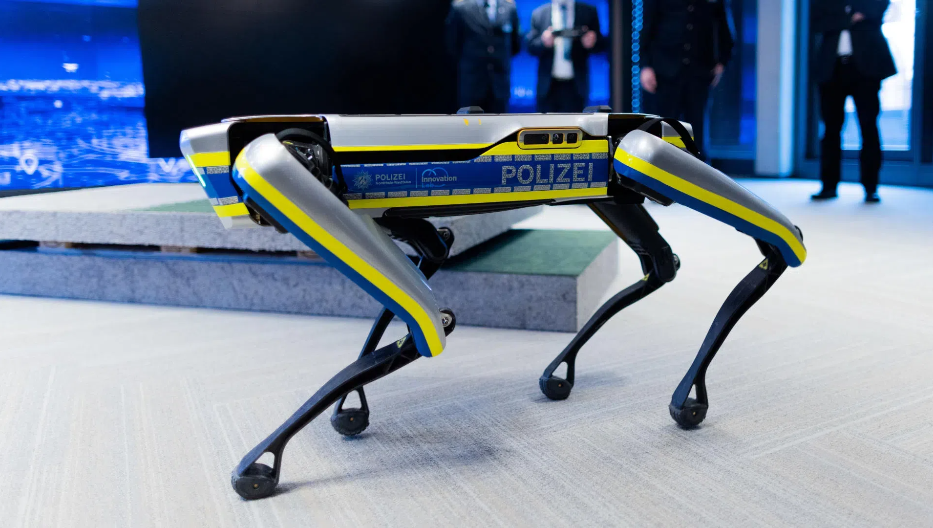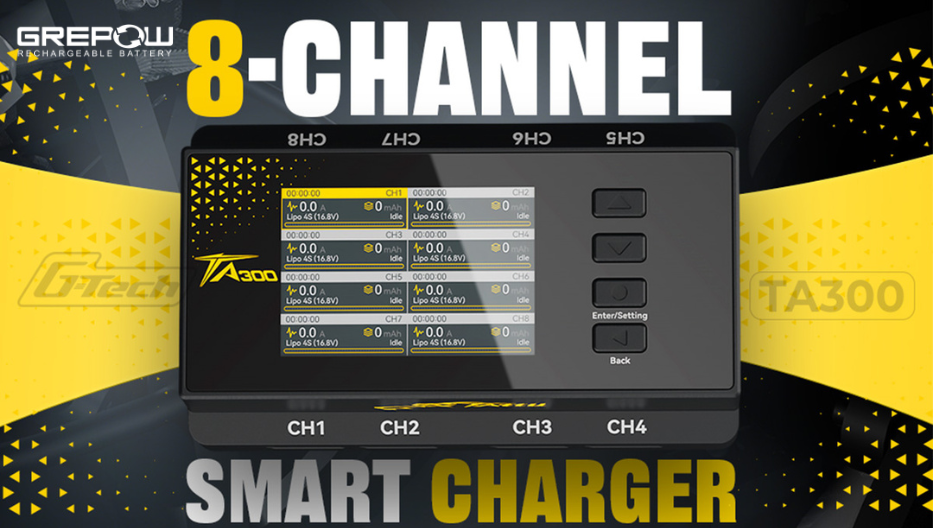Exploring the Power Behind Quadrupedal Robots: A Deep Dive into Robot Dog Batteries
Exploring the Power Behind Quadrupedal Robots: A Deep Dive into Robot Dog Batteries
Quadrupedal robots, often affectionately referred to as "robot dogs," are captivating the world with their impressive agility and versatility. These robotic systems can navigate challenging terrains and perform tasks that range from industrial inspections to search and rescue operations. At the heart of these machines lies a critical component: the battery. Without robust, efficient, and durable battery technology, the potential of quadrupedal robots would remain unrealized. This article delves into the pivotal role batteries play in powering these robotic marvels, examining their technologies, challenges, and future prospects.
What Are Quadrupedal Robots?
Quadrupedal robots are robotic systems designed to emulate the locomotion of four-legged animals. These robots utilize sophisticated algorithms and advanced sensors to navigate complex environments, adapt to uneven terrain, and perform a wide range of tasks. Their history traces back to the mid-20th century, with early prototypes focused on mimicking animal gaits. Over the years, advancements in robotics and artificial intelligence have transformed these machines into versatile tools capable of navigating complex terrains. Key players in the field include Boston Dynamics, known for its agile and robust Spot robot, and Unitree Robotics, a company that offers cost-effective and compact quadrupedal robots like the Unitree Go1.

Battery Technologies That Power Robot Dogs
Batteries play a crucial role in determining the performance and operational efficiency of quadrupedal robots. The battery must provide sufficient energy to power the robot's actuators, sensors, and onboard computers while also meeting stringent requirements for weight, size, and safety. A well-designed battery system ensures consistent performance across diverse environments.
Battery Types:
●Lithium-ion (Li-ion): Known for their high energy density and reliability, Li-ion batteries are a popular choice for robot dogs. They provide a balance between performance and weight, making them suitable for various applications. However, they can be sensitive to temperature fluctuations and require sophisticated management systems to prevent overheating or overcharging.
●Lithium Polymer (LiPo): These batteries offer high power output and are lightweight, making them ideal for compact and agile robots. Their flexibility in shape allows integration into unconventional designs. On the downside, LiPo batteries have a shorter lifespan and require careful handling to avoid issues like swelling or leakage.
●Lithium Iron Phosphate (LiFePO4): Valued for their safety and long cycle life, LiFePO4 batteries are particularly suited for industrial and outdoor applications where reliability is critical. They are more stable under high temperatures and less prone to thermal runaway, but their lower energy density compared to Li-ion and LiPo batteries can be a limiting factor for robots requiring extended operational time or high energy output.
●Solid-State Batteries: An emerging technology, solid-state batteries offer even higher energy densities and improved safety profiles by replacing the liquid electrolyte with a solid material. While still in development, these batteries hold promise for revolutionizing the performance and durability of robot batteries in the near future.

Factors Influencing Battery Life:
●Payload: The weight a robot carries significantly impacts energy consumption. A heavier payload requires more power for locomotion, particularly during acceleration and over uneven terrains. Optimizing payload distribution and minimizing unnecessary weight can improve battery efficiency.
●Terrain: The type of surface a robot navigates influences energy usage. Smooth, flat surfaces require less power, whereas rough, uneven, or steep terrains increase resistance and demand greater energy output. Robots designed for all-terrain functionality often feature adaptive gaits or energy-efficient walking patterns to mitigate these effects.
●Environmental Conditions: Extreme temperatures, whether hot or cold, can affect battery chemistry and efficiency. High temperatures may accelerate battery degradation, while low temperatures can reduce capacity and discharge rates. Advanced thermal management systems, such as active cooling or heating elements, help maintain optimal battery performance in challenging conditions.
Advancements in Battery Technology:
Recent innovations aim to address the limitations of existing batteries. High-energy-density batteries enable longer operation times, while rapid charging systems minimize downtime. Solid-state batteries and energy-harvesting technologies represent the frontier of power solutions for quadrupedal robots.
Challenges in Quadrupedal Robot Battery Design
Challenges in Quadrupedal Robot Battery Design
Despite advancements, battery design for quadrupedal robots faces several challenges:
●Range: Many robot dogs currently operate for only a few hours on a single charge, which limits their usability in extended missions. Extending the operational range without increasing battery size or weight is a constant challenge.
●Charging Time: Fast-charging solutions are essential to minimize downtime during critical operations.
●Environmental Considerations: Ensuring battery performance in extreme conditions, such as arctic or desert environments, requires innovative thermal management solutions.
Applications of Four-Legged Robots
Quadrupedal robots are transforming industries with their unique capabilities:
●Industrial Applications: In industrial settings, quadrupedal robots excel at inspection and maintenance tasks, especially in hazardous or hard-to-reach environments. They can traverse pipelines, inspect machinery, and identify potential issues, reducing human exposure to dangerous conditions.
●Healthcare: In healthcare, these robots are paving the way for advanced mobility assistance and medical deliveries. They can aid individuals with mobility impairments, transport medical supplies, and even perform preliminary diagnostic tasks in disaster-stricken areas.
●Surveillance and Security: Quadrupedal robots are increasingly used in surveillance to patrol and monitor security-sensitive areas. Their ability to operate autonomously, combined with onboard cameras and sensors, makes them effective in identifying and responding to threats in real time.
●Agriculture: In agriculture, these robots can monitor crops, detect pests, and assess soil conditions. Their mobility allows them to navigate uneven farmland, ensuring comprehensive analysis and efficient resource management.
●Entertainment and Research: Beyond functional applications, quadrupedal robots have captured public imagination in entertainment and research. They serve as tools for studying animal locomotion and biomechanics, while their appearances in films and public demonstrations showcase their advanced capabilities to broader audiences.
The Future of Quadrupedal Robots
As technology evolves, quadrupedal robots are poised to become more autonomous, efficient, and versatile. Future trends may include:
●Enhanced Autonomy: Integration of advanced AI algorithms will allow robots to make real-time decisions based on environmental feedback.
●Improved Mobility: Innovations in mechanical design will enable better movement across varied terrains.
●Battery Innovations: Continued focus on developing lighter, more efficient batteries will extend operational capabilities.
●Improved Durability and Reliability: Advancements in materials science and engineering will lead to more robust and reliable robots capable of operating in even harsher conditions.
As these technologies mature, quadrupedal robots are likely to become integral tools across multiple sectors.
Conclusion
Quadrupedal robots are revolutionizing industries by offering unparalleled mobility and functionality. The development of robust battery technology is central to maximizing their potential, ensuring they can operate efficiently in various applications. As both robotics and battery technologies continue to evolve, the future holds exciting prospects for these mechanical companions, driving innovation across multiple domains. Recognizing the critical role of batteries in robot performance, Grepow has developed a professional battery product platform for robots. This platform is designed to meet the diverse and evolving needs of the robotics industry, offering fully customizable battery solutions featuring semi-solid lithium batteries and lithium iron phosphate batteries, along with an advanced Battery Management System (BMS) for optimized performance and safety. If you have any questions or needs, please feel free to contact us at info@grepow.com.
Related Articles:
Future Trends in Robot Battery Tech: From High Energy Density to Smart Management
What Batteries Are Used for AGVs and AMRs?
What Battery Is Used In Humanoid Robots?
How to Choose a Combat Robotics Battery?
AUV vs. UUV: What’s the Difference?
Related Articles
-

Vatican Drone Show: Where Technology Meets Faith
2025-09-15 -

New Release: Tattu TA300 Multi-Channel Smart Charger for Drone Soccer
2025-09-12 -

How to Handle Battery Overheating Issues?
2025-08-12
Related products
-

10C Semi-Solid State High Energy Density Battery
-

5C High Energy Density Semi-Solid State Battery
-

4200mAh Semi-Solid State High Energy Density Battery
















































